
Best Windows 8 apps this week (Doomsday Edition)
Eighth in a series. Since the world is going down today anyway there is not really much need for today's article and while I thought for a moment about taking the day off, I'd like the idea of leaving the world with work done. So, here it is, the eighth part of the best Windows 8 apps of the week series on Doomsday.
Pssst: If the world doesn't end, and you have Windows 8, now you have something to look forward to.

Free Music Downloader 1.30 supports YouTube search and convert to MP3
The SZ Development released Free Music Downloader 1.30, the latest edition of its MP3 download tool, and the update is mainly about extending its list of supported sites.
The program provides a simple, free and portable way to search a number of sources for music. This update adds support for BandCamp, Hypem and Xiami to the existing list of sites and services, which also includes www.last.fm, vkontakte.ru, goear.com, GrooveShark.com, SoundCloud.com, mixcloud.com, ProstoPleer.com and 8Tracks.com. Elsewhere, a bug fix sees LastFM searches and downloads working again.
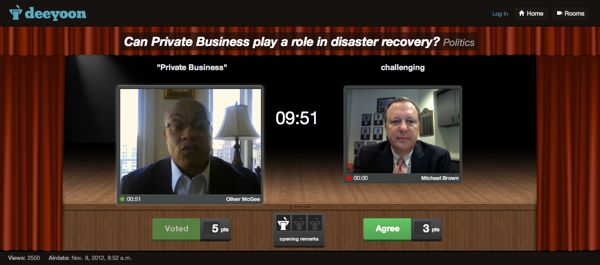
The future of the flame war
Anonymity serves an essential purpose; it allows us to speak without fear of persecution. But two-way anonymous communications are inherently antisocial, and are often counterproductive when trying to establish a certain level of discourse. This is the root of the comments section dilemma, and an issue online news sites like BetaNews think about quite a bit. We want you to be able to speak freely. We hate having to censor anything, but we also want civilized conversation.
Text-only communication is viewed as an "impoverished" form of social exchange, lacking all of the nonverbal nuances that help us share information on a deeper, more human level, and anonymous text-only communications are even weaker, stripping out most of the ethos of the speaker.

YouTube takes to the skies, brings its channels to Virgin America flights
Google has spent millions of dollars funding channels offering high quality content in a bid to compete with television, and more importantly, offer brand-safe shows for major companies to attach their adverts to. Some of the channels have been wildly successful, while others -- it’s fair to say -- haven’t reached anywhere near their full potential.
Still, YouTube remains committed to funding high-quality programming and in the next fortnight or so will start showing content from five of its flagship channels on Virgin America flights across the U.S. and Mexico.
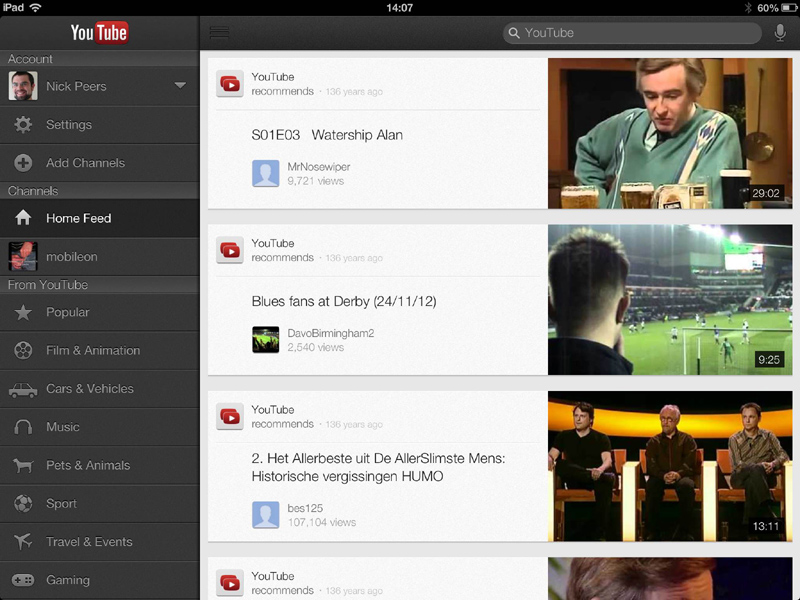
YouTube gets big makeover for iPad
Google unveiled two major iOS app updates with the release of Gmail -- email from Google 2.0 and YouTube for iOS 1.1.0. Gmail 2.0 is completely rebuilt from the ground up, debuting a brand new look and feel, the promise of better performance and a number of major new features.
YouTube for iOS adds native support for both iPhone 5 and iPad, plus the capability of streaming videos via Apple’s AirPlay wireless technology.
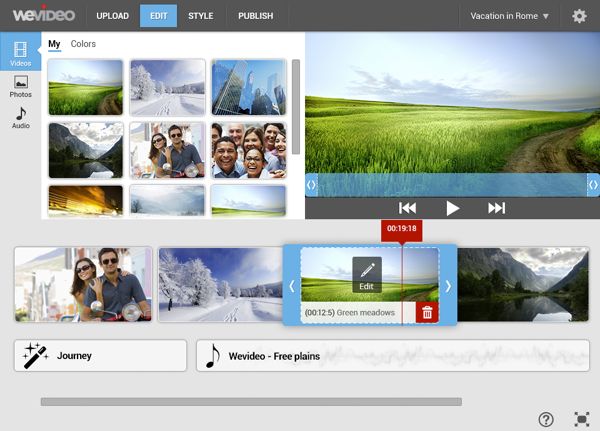
Cloud video editor WeVideo launches new simple UX
WeVideo on Tuesday unveiled an all-new mode for its video editing Web app geared toward the casual video shooter with little editing experience who needs to do quick and simple edits and share them on social media sites.
We first looked at WeVideo's freemium Web app when it launched last year. That app is still around in mostly the same form, only now it's known as "Timeline Mode." It lets users edit video and audio clips with stills, titles, and effects like one might expect from a free video editor.

YouTube captions: Now in 10 delicious languages
In the beginning there was English and it was good. Okay, not so much. Honestly I found YouTube captions early on to be pretty darn bad. The Google speech recognition tool wasn't up to snuff and it sometimes led to hilarious results. But, to it's credit, the company has made strides to improve. In fact, if you have used Android lately then I think you will find speech-to-text to be pretty solid.
YouTube, a Google property, introduced captions back in 2009. At the time it was English only, but as the technology improved other languages were added -- Japanese, Korean and Spanish were next to appear. Now the service offers an additional six languages.

Sprint made my cat a video star
I have two cats, Charlie and Chloe. Charlie is very talkative, especially when he’s hungry (which is most of the time), and indeed you can often have lengthy conversations with him. So when, in 2009, YouTube user Andrew Grantham (klaatu42) put out a call for clips of talking animals to appear in a new Christmas video, I filmed Charlie requesting more food and uploaded the 30-second snippet. I was very fortunate, because not only was my submission accepted but my cat was used to sing the opening lines to Deck the Halls.
It was a fun video, and clearly found an audience -- as to date over nine million people have watched it. But Charlie’s fleeting fame wasn’t to stop there. A few weeks ago, out of the blue, I received a slew of increasingly frantic messages in my YouTube inbox from the Leo Burnett advertising agency.

Google TV's killer app is simply amazing
This week, Google brought a little something from ill-fated Nexus Q to Google TV. Even my non-techie wife is amazed, and that's the point. This little something is really big, because anyone can use it and get dramatic benefits.
The new YouTube for Android app installed on smartphone or tablet now acts as a remote control to Google TV, taking interaction far removed and clumsy and making it intimate, fun and easy. If Amazon and Netflix operated similarly -- and the set-top box got Hulu Plus -- I'd cancel AT&T U-verse, baby.

The post-PC era already is over
That was fast, if it ever was. Don't blink or the so-called PC era will pass you by. For years, I've called it the cloud-connected device era because of the deeper meaning: Context. But more appropriately, the new epoch is contextual computing, which really extends a transition underway since the World Wide Web opened to the masses about 20 years ago. During the two earlier computing eras, mainframes and PCs, location defined the user. During the contextual computing era, the user defines location. If you listen to analysts obsessed with selling services to enterprises or companies like Apple, post-PC is all about devices. It's anything but.
Context is everything today. I started writing about the concept circa 2004, borrowing from my boss of the day -- Michael Gartenberg. The concept is simple: People are satisfied with what they've got on hand. In context of the airport, a hand-held game console is good enough, while at home the person prefers Xbox and big-screen PC. But because of the cloud connected to an increasing number of mobile devices, context is a much bigger, broader and badder technology trend.

Why won't Google pull that offensive YouTube video?
Let’s everybody beat up on YouTube for not pulling that offensive anti-Muslim video that is infuriating people around the world. No, wait. As disturbing as this story is let’s instead take a moment to try and figure what’s really happening and why YouTube and its parent Google are behaving this way.
It’s easy to blame Google’s algorithmic obsession for this mess, but I don’t think that’s at work here at all. Yes, Google is very good (which means very bad in this case) at blaming one algorithm or another for pissing-off users. Google customer support is, in a word, terrible for this very reason, and it often seems like they don’t even care. But this case is different, because it has less to do with algorithms than it has to do with intellectual property laws.
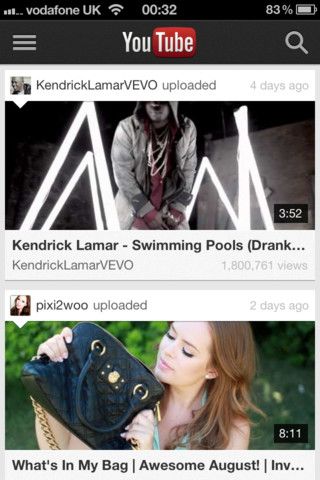
No longer an iOS pack-in, YouTube app update brings ads
Ahead of the Apple event rumored to be the unveiling of a new, smaller iPad, Google on Tuesday released an updated native YouTube application for Apple's smaller-screen iOS devices.
The new application for iPhone and iPod touch speeds up video discovery with an improved channel guide and search functionality, improved sharing capabilities, and a larger roster of compatible videos.
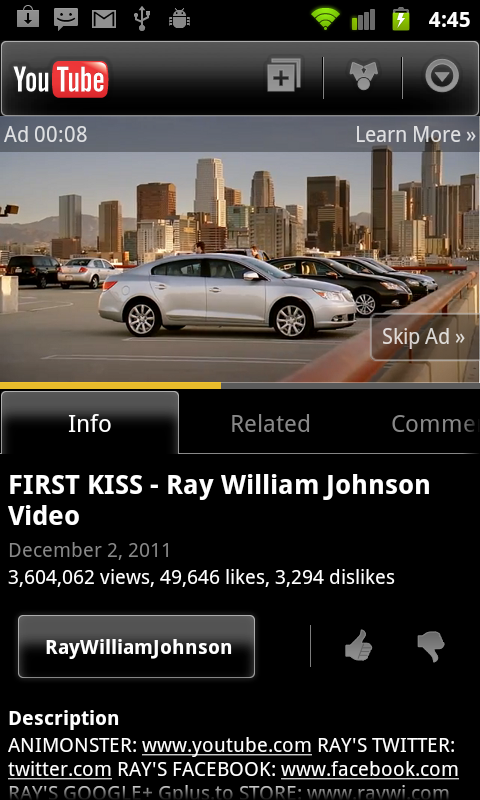
YouTube brings TrueView mobile ads
To monetize the ever increasing mobile traffic from smartphones and tablets, YouTube has announced the launch of TrueView in-stream video ads for mobile devices. YouTube content creators can now increase their revenues based on the video sharing website's mobile visits, which means that YouTube does away with an ad-free mobile viewing experience. It was bound to happen at one point or another.
In 2011 mobile traffic accounted for 20 percent of global YouTube views and its growth has been "phenomenal", according to Phil Farhi, YouTube group product manager. More than a trillion views marked 2011 for YouTube, meaning in excess of 200 billion mobile views were not monetized coming from the then 350 million mobile devices. According to YouTube, TrueView in-stream video ads are preferred to the standard video advertisements, since increased revenue can be generated from it. Responding to the announcement on YouTube one user stated that 1.3 million visits each month, accounting for 72.8 percent of his views, come from mobile devices, which is "lost" revenue.

Download video clips with YouTube Mate
Visit YouTube in your browser and it’s easy enough to search for and play any videos you like. Downloading individual clips and using them offline is a little more difficult, though -- unless you get help from a third-party tool like YouTube Mate.
Launch the program and it’ll immediately begin monitoring your clipboard for YouTube URLs. If you find a video you’d like to save, just copy the address to the clipboard, and YouTube Mate will pop up a Download dialog. Click OK, choose the video format and resolution you’d like to save (there’s full HD support here) and watch as YouTube Mate downloads and saves it for you.

Where do you discover new music?
At 17, I hitchhiked with a friend from Maine to Boston, where was the regional Federal Communications Commission office. The agency heavily regulated radio, and I couldn't be a deejay without obtaining a Third Class license, which required a test and some math skills (yeah, just to spin vinyl). I flunked and thumbed rides a second time, passing the exam and getting a five-year license. My radio career started at college station WMEB.
Much has changed about music since the late 1970s, when punkers rebelled against their disco-loving Baby Boomer siblings. But surprisingly much is the same, too -- or so Nielsen's "Music 360" report reveals. Radio doesn't dominate music discovery like it once did (I partly blame canned broadcasts for taking the personality out of the airwaves), yet remains top source: 48 percent of people find out about new music from radio. Friend recommendations is distant second (10 percent) followed by YouTube (7 percent).
